Panavia Tornado Strike Fighter
Although older than most of the pilots flying it, the Panavia Tornado is still the most popular strike fighter throughout Europe. In fact, there are twice as many Tornadoes in service across NATO members and allied states as the far more modern Typhoon Eurofighter.
Jack Of All Trades:
Much of that success is due to the Tornado proving itself as a true multi-role aircraft and primary workhorse for every NATO operation, from Yugoslavia to Syria and everywhere in between. Over the years, the Tornado has accomplished far more diverse missions than intended from its ground strike role.
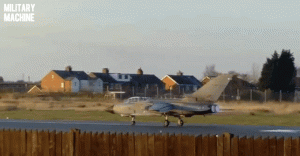
Cost Effectiveness:
The Panavia Tornado has another allure that makes it an easy choice for militaries around the world: it’s cost effective. This has incensed cash-strapped European militaries to replace multiple aircraft designs with the Tornado as a common battle platform for interception, ground attack, battlefield reconnaissance, maritime patrol duties, and dedicated electronic countermeasures (ECM) missions.
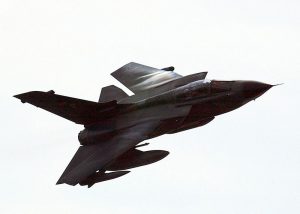
Unique Feature:
One of its most notable features are the “swing wings,” which allow the Tornado to rapidly transition from high-speed, high-altitude combat to low-level and fairly slow bombing runs with ease. Except for the Russian-designed MiG-23/27 Floggers, the Tornado is the only adjustable-wing combat aircraft still in front-line service.
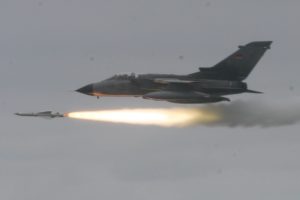
Development:
Conceived during the Cold War when WWIII seemed right around the corner, the Panavia Tornado was designed as a rugged fighter-bomber that could operate from improvised runways and battle-damaged airfields. If the Cold War had ever gone “hot,” the Tornado would have represented the bulk of non-US combat aircraft on the Western European front. Outside of Europe, Saudi Arabia maintains a large fleet of active-duty Tornados performing most of their airstrikes in Yemen.
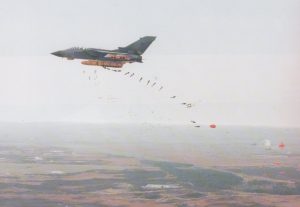
Variants:
The Tornado line has evolved into three main variants in use today. First is the Tornado IDS, which specializes in deep strike missions with precision ordinance and is the most popular and technologically advanced. The Tornado ECR is Europe’s primary tool for Suppression of Enemy Air Defense missions and battlefield reconnaissance. Finally, the Tornado ADV is a specialized air-to-air combat frame intended for long-range interception of enemy aircraft.
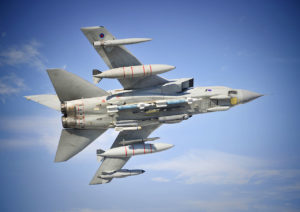
While not the most hi-tech aircraft flying in the 21st century, the Tornado’s relatively low-cost and extensive track record of reliability keeps extending its service life every time budget planners discuss retiring the fleet.
Also see these Captivating Images of the Panavia Tornado.
See Panavia Tornado Specifications
| Crew: 2 |
| Length: 16.72 m (54 ft 10 in) |
| Wingspan: 13.91 m at 25° wing sweep, 8.60 m at 67° wing sweep (45.6 ft / 28.2 ft) |
| Height: 5.95 m (19.5 ft) |
| Wing Area: 26.6 m2 (286 ft2) |
| Empty Weight: 13,890 kg (30,620 lb[252]) |
| Loaded Weight: 20,240 kg (44,620 lb[253]) |
| Max. Takeoff Weight: 28,000 kg (61,700 lb) |
| Powerplant: 2 × Turbo-Union RB199-34R Mk 103 afterburning turbofans |
| Dry Thrust: 43.8 kN (9,850 lbf) each |
| Thrust with Afterburner: 76.8 kN (17,270 lbf) each |
| Maximum Speed: Mach 2.2 (2,400 km/h, 1,490 mph) at 9,000 m (30,000 ft) altitude; 800 knots, 1,482 km/h, 921 mph indicated airspeed near sea level |
| Range: 1,390 km (870 mi) for typical combat mission |
| Ferry Range: 3,890 km (2,417 mi) with four external drop tanks |
| Service Ceiling: 15,240 m (50,000 ft) |
| Rate of Climb: 76.7 m/s (15,100 ft/min) |
| Thrust/Weight: 0.77 |
| Guns: 1× 27 mm (1.06 in) Mauser BK-27 revolver cannon internally mounted under starboard side of fuselage with 180 rounds |
| Hardpoints: 4× light duty + 3× heavy duty under-fuselage and 4× swivelling under-wing pylon stations with a capacity of 9,000 kg (19,800 lb) of payload, the two inner wing pylons have shoulder launch rails for 2× Short-Range AAM (SRAAM) each and provisions to carry combinations of: Missiles: • AIM-9 Sidewinder or AIM-132 ASRAAM air-to-air missiles for self-defence • 6× AGM-65 Maverick; or • 12× Brimstone missile; or • 2× Storm Shadow • 9× ALARM anti-radiation missile Bombs: • 5× 500 lb Paveway IV; or • 3× 1000 lb (UK Mk 20) Paveway II/Enhanced Paveway II; or • 2× 2000 lb Paveway III (GBU-24)/Enhanced Paveway III (EGBU-24); or • BL755 cluster bombs; or • Up to 2× JP233 or MW-1 munitions dispensers (also for runway cratering operations) • Up to 4× B61 or WE.177 tactical nuclear weapons • Other: Up to 4× drop tanks for ferry flight/extended range/flight time |

